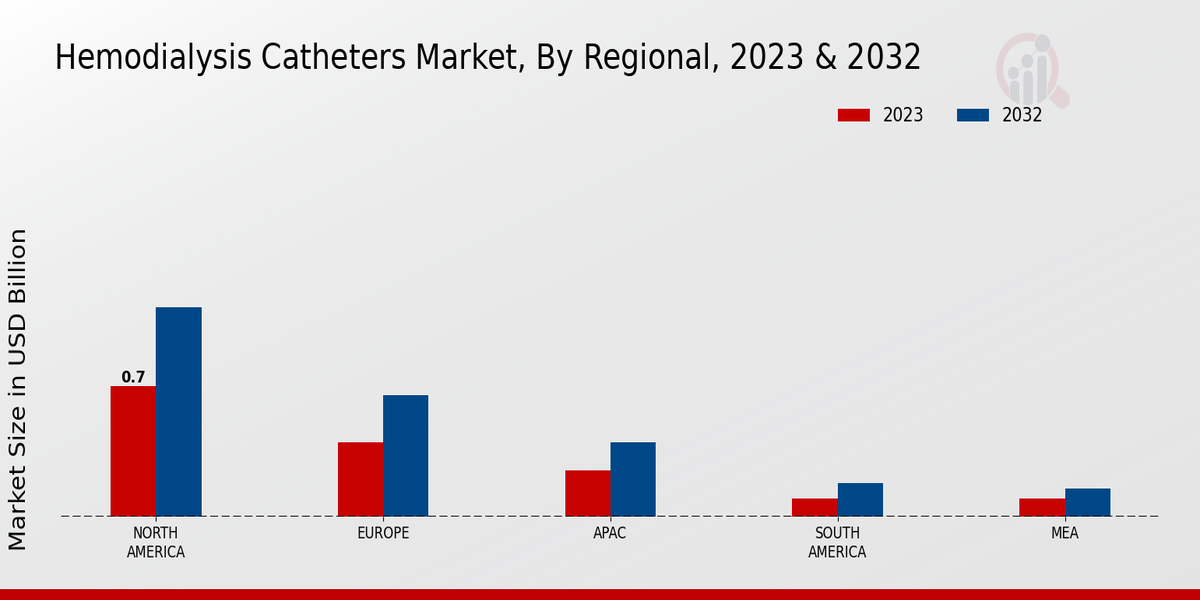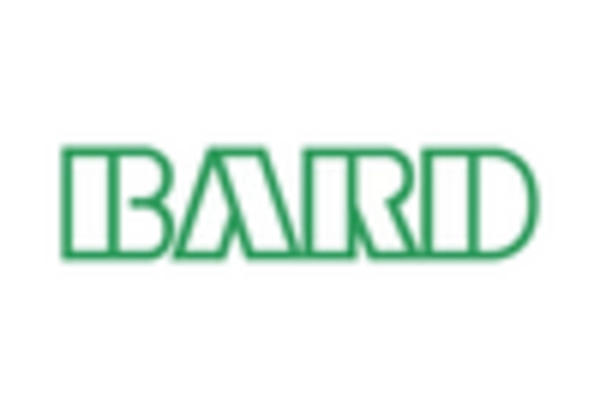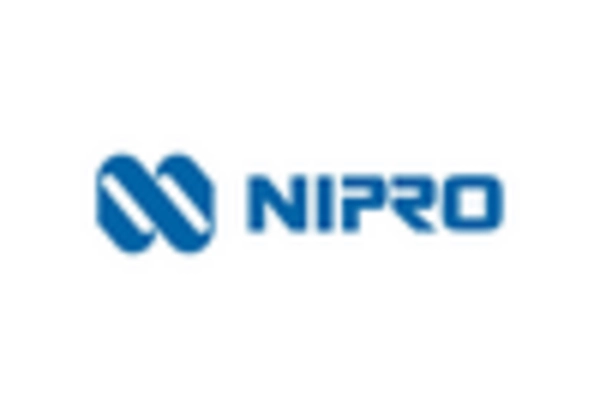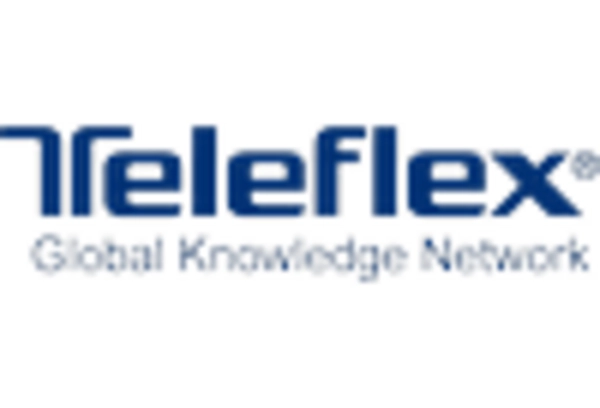Increasing Prevalence of Kidney Diseases
The rising incidence of chronic kidney diseases is a primary driver for the Hemodialysis Catheters Market. As per recent statistics, approximately 10% of the population is affected by some form of kidney disease, leading to a growing demand for effective treatment options. This trend is likely to escalate as the population ages and lifestyle-related health issues become more prevalent. Consequently, healthcare providers are increasingly relying on hemodialysis as a critical intervention, thereby boosting the market for hemodialysis catheters. The need for reliable and efficient catheters is paramount, as they play a crucial role in ensuring successful dialysis procedures. This growing patient base is expected to propel the market forward, indicating a robust future for hemodialysis catheter manufacturers.
Technological Innovations in Catheter Design
Innovations in catheter technology are significantly influencing the Hemodialysis Catheters Market. Recent advancements have led to the development of catheters that are not only more durable but also designed to minimize complications such as infections and thrombosis. For instance, the introduction of antimicrobial coatings and improved materials has enhanced the safety and efficacy of these devices. Market data suggests that the demand for technologically advanced catheters is on the rise, as healthcare providers seek to improve patient outcomes and reduce hospital stays. This trend towards innovation is likely to attract investments and drive competition among manufacturers, further stimulating market growth. As technology continues to evolve, the hemodialysis catheters market is poised for substantial advancements.
Regulatory Support and Reimbursement Policies
Supportive regulatory frameworks and favorable reimbursement policies are crucial drivers for the Hemodialysis Catheters Market. Governments and health authorities are increasingly recognizing the importance of dialysis treatment, leading to the establishment of policies that facilitate access to necessary medical devices. Enhanced reimbursement rates for hemodialysis procedures are encouraging healthcare providers to invest in high-quality catheters, thereby boosting market demand. Furthermore, regulatory bodies are streamlining approval processes for new catheter technologies, which may lead to quicker market entry for innovative products. This supportive environment is likely to foster growth in the hemodialysis catheters market, as manufacturers are incentivized to develop and introduce advanced solutions that meet the evolving needs of patients.
Rising Awareness and Education on Kidney Health
There is a growing awareness regarding kidney health and the importance of early detection of kidney diseases, which is positively impacting the Hemodialysis Catheters Market. Educational campaigns and initiatives by healthcare organizations are informing the public about the risks associated with kidney diseases and the necessity for timely treatment. This increased awareness is likely to lead to higher screening rates and, consequently, a greater number of patients requiring hemodialysis. As more individuals become informed about their health, the demand for hemodialysis catheters is expected to rise. This trend not only enhances patient engagement but also encourages healthcare systems to invest in better dialysis solutions, thereby fostering market growth.
Expansion of Dialysis Centers and Home Dialysis Options
The expansion of dialysis centers and the increasing availability of home dialysis options are pivotal factors driving the Hemodialysis Catheters Market. As healthcare systems adapt to the growing demand for dialysis services, more facilities are being established, particularly in underserved regions. This expansion is complemented by a shift towards home-based dialysis, which offers patients greater flexibility and comfort. Market analysis indicates that the number of home dialysis patients is steadily increasing, leading to a heightened need for reliable hemodialysis catheters. This dual trend of facility expansion and home dialysis adoption is likely to create a more competitive landscape, encouraging innovation and improving access to essential dialysis services.


















Leave a Comment